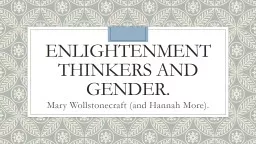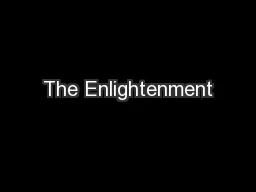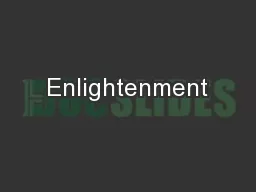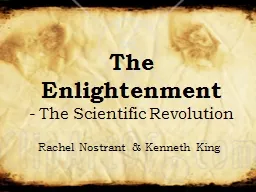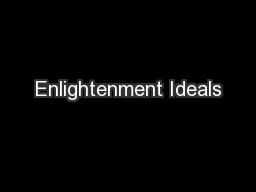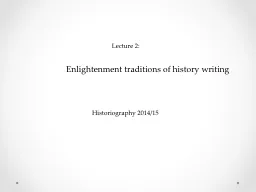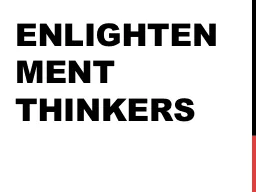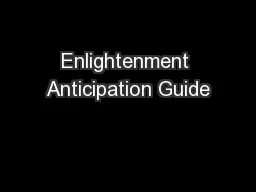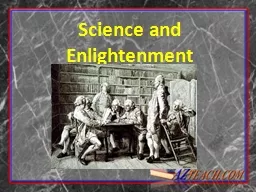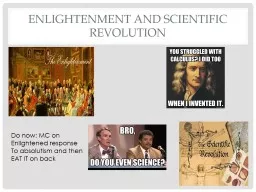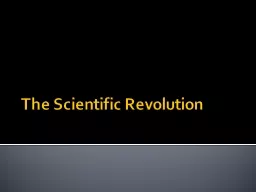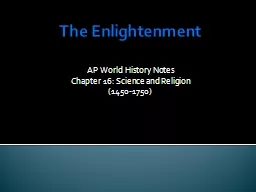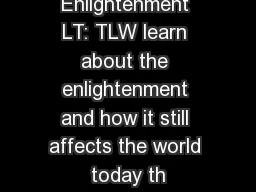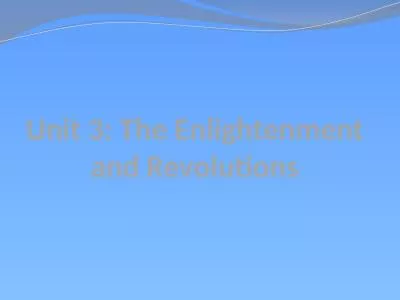PPT-Enlightenment Thinkers and Gender.
Author : debby-jeon | Published Date : 2018-10-06
Mary Wollstonecraft and Hannah More Mary Shelleys Frankenstein 1816 Swiss Alps Competition Mary Shelley Percy Bysshe Shelley and Lord Byron Socialism The monster
Presentation Embed Code
Download Presentation
Download Presentation The PPT/PDF document "Enlightenment Thinkers and Gender." is the property of its rightful owner. Permission is granted to download and print the materials on this website for personal, non-commercial use only, and to display it on your personal computer provided you do not modify the materials and that you retain all copyright notices contained in the materials. By downloading content from our website, you accept the terms of this agreement.
Enlightenment Thinkers and Gender.: Transcript
Download Rules Of Document
"Enlightenment Thinkers and Gender."The content belongs to its owner. You may download and print it for personal use, without modification, and keep all copyright notices. By downloading, you agree to these terms.
Related Documents

